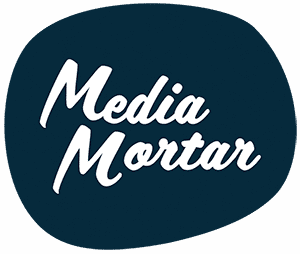
“Sounds good, but what’s the ROI?”
We’re so used to this question it could form part of a drinking game in client meetings (Eds note: we should bring drinks to new meetings).
Since paid digital media is so transparent in the way it reports returns, it’s easy to question the ROI (return on investment) on organic content. Organic content doesn’t always spit out a neat little graph that marries up with how many leads, clicks and sales came from your content.
But just because you can’t (always) print a picture-perfect report, doesn’t mean ROI doesn’t exist.
Let us take you through how you can measure ROI from organic content.
How do you measure ROI from blog posts?
 When it comes to determining a return on investment for blog posts, let’s start with defining your investment.
When it comes to determining a return on investment for blog posts, let’s start with defining your investment.
Your investment is what it costs to pay a writer (like us) to professionally write the blog post or the time it takes for your staff to DIY and do the same.
Thinking of distributing your blog post via a paid advertising channel like Outbrain or Facebook? You can add that onto your investment receipt too.
So then, what’s the return on the now 600-1000 words sitting on your website (like this one)? Find your answer in the ‘why’ you wrote the blog post in the first place.
Since 99% of blog posts are written for awareness rather than sales, your return on investment is simply how many people read the blog post and for how long (awareness). You can find these two metrics sitting in your Google Analytics.
You can easily compare these results against your paid media analytics. We’ll take a bet that your organic blog posts are read for longer and have a higher engagement rate than anything you pay for.
Why? The people searching for your blog went looking for it in the first place and stumbled upon it because the words used matched their search query.
How do you measure ROI from organic social media posts?
 So, you’ve handed your social media to a social media manager (like us) or you’ve got a staff member racking up their hours online – you’ll want to see runs on the board.
So, you’ve handed your social media to a social media manager (like us) or you’ve got a staff member racking up their hours online – you’ll want to see runs on the board.
Before you pop the ROI question, we need to go back to why you’ve opted for organic posting in the first place.
If it was for conversions, you may have a case of a channel that’s not fit for purpose.
Take it from us, there’s plenty of other marketing tools in your toolbelt, which will get people picking up the phone faster than organic social media.
Organic social media is best deployed when you want to build a community, start conversation and create brand awareness. Once you’ve done all three, you’ll find the sales will follow. If you need more convincing, you’ll like this blog post about why stories drive sales.
Your return for all that time and investment is a loyal community, aka the people you can develop into what Seth Godin calls ‘superfans’ in This is Marketing (one of the books in our Recommended Reading List).
Anyone in business will know you only need one or two superfans to amplify your marketing efforts. They have a compounding effect just like shares in the stock market – so when you win over one or two people, they’ll convert others for you.
Your Facebook, Instagram and LinkedIn analytics will paint a picture of what content is being liked, shared and saved. Then rely on Google Analytics to do the heavy lifting on the metric front with how many leads come out of each social media platform to your website.
With these insights, you can make informed choices about where to direct most of your energy to keep telling those stories that will drive sales.
In our case, LinkedIn drives 60% of all Media Mortar website traffic, so that’s where we should put 60% of our investment.
Connecting your investment with which channel has the returns is the secret weapon to your organic social media’s success.
How do you measure ROI from eNewsletter content?
 No need to put on your detective hat when it comes to ROI on eNewsletters. With email analytics it’s a lot easier to see how effectively your content is working for you.
No need to put on your detective hat when it comes to ROI on eNewsletters. With email analytics it’s a lot easier to see how effectively your content is working for you.
Each email platform has its own built-in analytics which includes reports on open rates, click-through rates and conversions.
You’ll see your ROI soar when the content resonates with the audience – and equally reflected in your unsubscribes if and when your content misses the mark.
Since an email without words or images (content) is just an empty shell, we think it’s fair to connect your open rate to the value of the content contained within it, and that’s the ROI of your send.
If you need more convincing on the value of content, 69 percent of people decide to open an email or mark it as spam based on the subject line alone (source: Campaign Monitor). We’d go so far as to say your ROI truly depends on the quality of that one line.
If you’re thinking of skimping on the content development of your next send, don’t forget, the average ROI of an eNewsletter is $44 for every $1 spent in sending it (Source: Campaign Monitor).
That readers is an ROI we like the sound of.
How do you measure ROI on the copywriting on your website?
 We get that building a website is expensive between words, images and physical design. But in our view, all three deliver years of ROI since your website is the digital shopfront for your business.
We get that building a website is expensive between words, images and physical design. But in our view, all three deliver years of ROI since your website is the digital shopfront for your business.
Would you skimp on the fit-out of your shopfront? We didn’t think so.
Words carry weight on websites, not just in the way they convey meaning to the reader but in how they convey meaning to the SEO-bots who crawl your site looking for keywords to serve search results to the reader.
Not only that, but the words on your websites also work for you 24/7, making websites one of the most cost-effective returns on investment, based on their time spent in market alone.
A word of warning though when it comes to website copy. If you’re looking for instant gratification in SEO alone, we’re not surprised you can’t see ROI.
The difference between organic and paid content when it comes to website words, is that keywords and website traffic takes months, if not years to build.
What have we missed? Are there any other forms of ROI on organic content you’d like to know?

By Hannah Statham
Hannah Statham is The Boss at Media Mortar. She’s a heavy weight wordsmith, punching with puns, analogies and metaphors that leave readers wanting more. When she’s not refreshing her Instagram feed, you’ll find Hannah walking her rescue greyhound Olivia.

Recent Comments